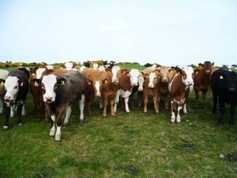Merchant credit always builds up at this time of year. It’s easier to go into the local merchant or co-op and put it on the account. For some it has been a way of doing business for years, a way of managing their cashflow. Merchant credit is definitely one of the first things that balloons when times are tough. It is the way many keep the overdraft under the limit.
One part of getting financial fit should be to plan to manage you merchant credit better.
The reason being that merchant credit is one of the most expensive forms of credit you can use. Merchants charge from 0.8% to 2.4% a month. With the interest compounded, the real interest rate is between 10% and 14% a year, higher than many credit cards. However, there is also a hidden built-in margin that merchants add to the price of goods sold on credit.
Merchants put between 5% and 15% of a higher margin on products bought on credit and sometimes even more. Added to the interest rate, it means that farmers using merchant credit to fund their business could pay up to 20% higher for their inputs. Merchants will admit it is high, but they are not bankers and have to borrow money themselves.
Price for inputs
The best price for inputs is when you can pay on the day. Many farmers who pay off their account regularly can get the interest knocked off the bill before paying. However, they will have difficulty getting the additional margin added to be dropped. With rising credit bills, merchants are taking a much tougher line on writing off interest as well as reducing the quoted prices.
Farmers who have let bills build up and are paying off a bit each month are in a very weak position when negotiating. In extreme cases, some merchants have stopped the credit of farmers they had problems with in the past.
What should farmers do?
For many it cannot happen overnight, but the aim should be to get a bit better every year. Setting up a credit line in the bank for working capital is the cheapest way to fund your business. A number of farmers have moved to do this in recent years. Interest rates of 5% to 6% are on offer. A credit line is different from an overdraft and repayment terms are built-in during the year. Farmers who have set up this system have the ability to negotiate the best deal on inputs at the time of purchase.
If merchant bills are mounting, you need to look closely at the underlying cause. Lower output prices and higher costs are having a major impact. For many it comes back to managing cashflow.
In some cases, higher merchant bills are partly due to farmers using cashflow to fund building work.
There may be a need to look at restructuring loans, although banks are slow to incorporate merchants’ credit that has built up over time in new loans. In saying that, it is being done as part of a restructuring package.






 This is a subscriber-only article
This is a subscriber-only article










SHARING OPTIONS: